Being Transgender in the UK, Transphobia and How to be Inclusive
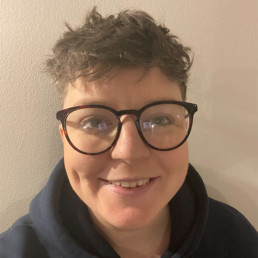
Written by George Hughes
Senior Education, Training and Strategy Officer currently working for EqualiTeach. Having previously worked as an English teacher, George has a passion for writing. They are currently studying an MA in creative writing at Manchester Metropolitan University and hope to one day publish their own children's novel.
With roughly 200,000 – 500,000 trans people living in the UK (Government Equalities Office, 2018), and more celebrities coming out as gender diverse, trans people have become a popular subject for discussion. While many transgender people are celebrated around the world, discrimination and transphobia is still being faced daily with devastating consequences. This blog is about being transgender in the UK, what we mean by transphobia, and what we can do to be inclusive of all members of the community.
First of all, what is meant by the term transgender?
The word transgender is a term which describes people whose gender identity is not aligned with the sex they are assigned at birth.
What is gender identity?
A person’s gender identity is their personal and internal sense of who they are regardless of their hormones, internal and external sex organs, and chromosomes. Gender is no longer regarded as a binary model wherein people have to identify as either man or woman; it is instead a spectrum in which a person is able to freely identify themselves as one of over 60 different gender identities. (Abrams and Ferguson, 2022)
What is transphobia?
In simple terms, transphobia is negative feelings, attitudes or actions against people who identify as transgender. It also covers those who identify as nonbinary, transsexual or androgyne. Transphobia can be seen in many different forms and can range from inappropriate language, prejudice-related bullying, to full-blown violent attacks.
The transgender community have become a topic more frequently discussed by the British tabloids. Panic and prejudice have been propagated by the press and gender critics. Research carried out by Forbes (2021) has claimed that 375 transgender people were murdered in 2021 – twenty five more than the year before. According to records, this is the ‘deadliest year of violence against gender diverse people since records began.’
In August 2020, the Equality and Human Rights Commission published a report which showed the public’s attitudes to trans people. From the data, it is clear that many people do show a positive attitude. When asked to choose words to describe their feelings towards trans people, many chose words such as ‘respect’ and ‘admire’. However, there is still a percentage who selected ‘pity’, ‘fear’, ‘disgust’ and ‘resentment.’
So why is there a growing level of fear-mongering and intolerance?
Shon Faye (2021) states, “By and large, the transgender issue is seen as a ‘toxic debate’, a ‘difficult topic’ chewed over (usually by people who are not trans themselves) on television shows, in newspaper opinion pieces and in university philosophy departments. Actual trans people are rarely to be seen.” As a trans person, it is hurtful to have my existence debated by people without any lived experience. How often do we see ourselves reflected in the media, and not being spoken about by a cisgender person?
As someone who has recently come out as trans, I am getting used to the daily microaggressions and comments about people’s ‘transness’. People have a lot of questions! The most common questions are “When you are having surgery or taking hormones?” as that is what people assume is everyone’s next step. It is not enough that we exist, we have to exist in a way that everyone expects us to.
What is it like being trans in the UK?
While there is lots of support, it is also incredibly difficult. In order to even be diagnosed with ‘gender dysphoria’ (the feeling of discomfort or distress that might occur in people whose gender identity differs from their sex assigned at birth or sex-related physical characteristics) and start medically transitioning, you have to be assessed by two psychologists with expertise in the area of gender development. These can be in excess of £1000 and that is just to get a piece of paper with your ‘diagnosis’ on. If you were to go through the NHS, wait times for the first appointment alone are a minimum of eighteen months – and that is if you are fortunate. Once you have your referral, you are faced with more waiting to see a specialist in that area. Even privately, waiting lists for hormone replacement therapy are a year long. So, while some of us will be going through hormone therapy or surgery, each time we are asked, it reminds us of the long waiting list ahead and the months to follow where we still don’t feel at home in the body we are in.
How can people help?
One way, is to avoid gendered language
Reflect on the language you are using. Using gendered language such as ‘boys and girls,’ ‘lads’ and ‘ladies and gentlemen’ can be alienating for those who identify as gender non-conforming and gender diverse. Being referred to as ‘miss’, ‘ladies’, or ‘madam’ makes me feel uncomfortable every single time.
To avoid this, use vocabulary such as:
- Everyone
- People
- Folks
These terms are more inclusive and do not focus on someone’s gender or gender identity.
Use chosen names and correct pronouns
A person’s chosen name and pronouns are an important part of their identity. If someone has asked you to use these, ensure you are doing so in order to respect the person’s gender identity, and to ensure that they feel included and valued. Chances are, someone has spent a lot of time thinking about their name, so please use it!
If you’re not sure of someone’s pronouns, ask! I have always really appreciated it when someone has asked me what my pronouns are. It immediately puts me at ease. If you are struggling to remember, have a go at saying their names and chosen pronouns aloud.
For example:
Sam is a trans man, he is using he/him pronouns.
Jamie identifies as non-binary. They use they/them pronouns.
What is a deadname?
A deadname is the name transgender people may use to refer to the name they were given at birth. Some people may refer to it as their birth name. You should not ask what their deadname or birth name is, unless it is for legal or financial reasons. If someone wants to share this with you, they will. If you know someone’s birth name, don’t use it. Use the name that the individual asks you to use.
What if I call the person their birth name or use the wrong pronouns?
People make mistakes all the time. It’s okay! If you happen to do this, apologise and move on. If someone corrects you, say ‘thank you’ and move on. It may take a while to remember if you have known the person a while. The most important thing is to show that you are trying.
What if I’m talking about someone before they transitioned?
Always refer to the person using their chosen name and pronouns unless they tell you otherwise. It is respectful to only use what the person is happy with.
And finally, if there is a question that can be answered by Google, search for it!
I started out thinking I had to be everyone’s guidebook to being transgender. I misplaced nosiness for support and said that I was happy to answer any questions at any time. I have since realised that it is not my duty to educate others; that is something that has to come from them. While I am more than happy to have conversations on being transgender, rights, discrimination and equality, I am not here to help people understand what being transgender means. It is tiring.
If I was to use a metaphor to describe being trans, it would be this:
Being trans is like floating around in a rubber ring in the ocean. You can see everyone else on their islands happily being themselves and being free. No matter how hard you paddle, you can’t get there. You’ve never visited and you don’t know how to. People keep telling you to visit, but you still don’t know how. Accepting you are trans allows you to start building a bridge from your rubber ring to the island. With each step you take to becoming yourself, another part of the bridge is added, until it is finally completed. When people call now, you can then cross the bridge and live on that island. It is then that you feel like you’re home.
Creating Change – The World I want to Live In
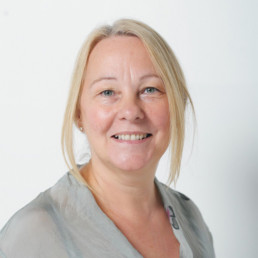
Written by Ann Beatty
Chief Executive, The Steve Sinnott Foundation
There is an urgent imperative for young people to learn about themselves, where they come from, their sense of place in their community and the wider world and most importantly their human rights. Do you have human rights? Do others have the same human rights as you do? Do you actually have human rights in your school?
The recent events of a school girl being assaulted in a school by police officers, the many wars across the world and the ways in which we see people being treated differently because of their skin colour, gender or social status has shocked many, but we know that many people experience discrimination on a daily basis in more subtle ways.
Wherever you find yourself in the world there are different challenges in the provision of education. For us working in Cuba and Haiti brings different challenges in providing access to education than our work in The Gambia and Sierra Leone or the U.K, but we are all connected and have much to learn from each other. As a team Covid reminded us of that connection in many ways.
We believe in the potential of education to invest in each young person to flourish and as an investment in a more inclusive world in the future. We want students to choose the topic that’s important to them right now and develop their ideas through creative arts, spoken word, painting, drawing, mime, drama, photography, or any creative medium they choose.
Working in partnership with the National Education Union and the Gambia Teachers Union we have produced a resource pack for schools Creating Change – The World I Want to Live In. We have launched a competition inviting students to give their voice to the topics that are important to them right now in this moment. We hope that students and educators will find the resource useful, return to the resource pack in the future and develop their own ideas.
You can register your interest here and download the free resource pack:
https://www.stevesinnottfoundation.org.uk/human-rights-competition
We hope that this creative approach to learning will cultivate healthier ways of having conversations about the topics that matter to young people; allow them to relate to one another and to society, whilst enhancing their wellbeing, promoting inclusion and encouraging them to engage with and find solutions to the many social challenges of today.
The deadline for competition entries is 1st June.
If you have any questions, please contact ann.beatty@stevesinnottfoundation.org.uk
The Great Hypocrisy - Racism in Arab Communities
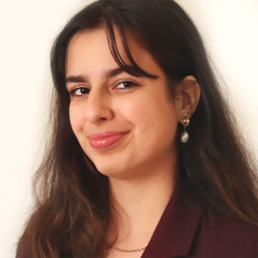
Written by Jenin Al Shalabi
Jenin Al Shalabi is a speaker and writer who is passionate about highlighting diverse stories that break barriers and ignite change. Within her school community, Jenin established a school-wide Diversity, Equity and Inclusion council.
I am seven years old. My grandmother and I drive through the streets of Jordan. I see billboard after billboard with images of women with fair skin, blue eyes, and Eurocentric features proudly plastered across them. None of these women look like the Arab women I know. All of them preach strange creams that apparently lighten their skin.
I don’t think much of it.
I am ten years old. I sit in a classroom and listen as a teacher mocks a student for having monolid eyes, calling her eyes ‘little Chinas’. We all laughed it off.
I am twelve years old. I frown as I hear family members mimic and mock a typical ‘Indian’ accent, coupled with exaggerated hand movements and facial expressions. I scowl, but I don’t speak up.
This is just the tip of the iceberg. Racism is a virus that has embedded itself into the heart and soul of Arab communities, thriving on ignorant perpetuation.
The matter of the fact is that racism is, and always has been, deeply ingrained into Arab communities. It’s ironic: I have, on countless occasions, heard fellow Arabs express great frustration at the amount of bias and prejudice they received from those outside their communities. Arab communities have long been the target of belittling stereotypes, harmful remarks, and heinous micro aggressions.
So – how can these same communities then so freely indulge in displays of racism towards other minority groups? How can we eternalize the same racism that has brought down our own communities for so long?
Many Arabs don’t feel compelled to question their bigotry, because it has been so deeply ingrained into our cultural hegemony, that it becomes second nature. Take a quick flick through some Arab TV channels – the only time you would see people with darker skin tones was when they were portrayed as servants or villains. Ideally, the actors had porcelain skin that glistened on screen. Despite the fact that in the US alone, 20% of the Muslim population is Black. TV constructed an unobtainable beauty standard for the Arab population – teaching them to equate dignity with Eurocentrism.
And it doesn’t stop there – growing up, many Arab children would have been introduced to a desert called “Ras ilabed”, which literally translates to ‘the head of the slave’. This dessert is composed of a marshmallow center dipped in chocolate, said to resemble the head of a slave due to its dark color. Thousands enjoyed this sweet without caring to confront its racist origins.
All the examples I’ve provided above may seem like mere jokes, silly comments, or meagre coincidences. But the actuality is, these insignificant occurrences are indicators of larger webs of underlying prejudice that can easily spawn into something much bigger, and much more horrifying.
A prime example is the murder of George Floyd – which shone a light on the ever-growing racial prejudice that dominates many corners of society today. Many of us have become increasingly familiar with the murder via social media.
But, something that the media might’ve neglected to tell you: the corner shop that had originally called the police on Mr. Floyd was run by a Palestinian American man, Mahmoud Abumayyaleh. Mr. Floyd was murdered right in front of his store. We enabled the atrocious murder of an innocent Black man. We stood on the sidelines. We allowed our deeply ingrained prejudices to interfere with our humanity.
We think we aren’t a part of this story, but we are.
We cannot complain about the hatred towards Arabs that has been promoted by Western media if we are willing to project that same hatred onto other communities. Contributing to a cycle of such hatred is the epitome of hypocrisy.
Racism in the Arab community doesn’t stop at anti-blackness, unfortunately. The Arab community has also been an epicenter for appalling portrayals of bias against South Asians. All this, despite the fact that Arabs and South Asians have many cultural beliefs and practices in common.
I went to a predominantly Arab school, in which there were only two South Asian students in our entire year. These students were constantly isolated and ostracized. Any open expression of their culture was met with frowns and whispers. Living in Dubai, I had always believed the country to be a hub for diversity; a cultural melting pot. Hence, I found it sickening that in what was meant to be such a culturally aware landscape, many felt it difficult to move past archaic stereotypes that they had been spoon-fed.
What do we, as a community, gain from ostracizing and belittling other communities of color? Should we refuse to acknowledge the poisonous biases that lay deep within all of us, we will be feeding a cycle of hypocrisy and contributing to the suffering of many.
The Cure for What Ails Us: Reigniting a Healthy Sense of Well-Being and Belonging in Schools
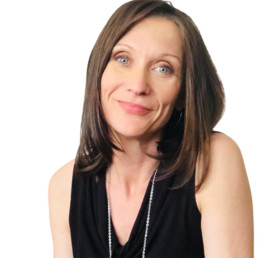
Written by Jennifer Johnson
As a parent, a former educator, an entrepreneur and a passionate change-maker, Jennifer is on a mission to empower young people to be their best selves to create a better world. She has an M.A. in Education in Curriculum, Teaching and Organisational Learning.
Since launching the Captains & Poets Program in schools in 2019 we have been exploring the ins and outs of what it means to be human – and all with the backdrop of a series of crises at home, at school and on the world stage.
The erosion of the social fabric in schools over the past two years has led to notable increases in issues around mental health and well-being, and in bullying and hate crimes. While the two may or may not be directly correlated (a topic for another blog perhaps), what they have in common is the unprecedented level of uncertainty, the minimizing of interpersonal connection, an absence of ritual, a sense of complacency and rudderlessness that has set in, the shrinking of young people’s worlds and the associated loss of opportunities for identity formation – do I need to go on?
The premise of the Captains & Poets program is that there is a unique Captain and Poet in each and every one of us that, in partnership, enable us to be our best, most authentic selves. And, when the Captain and Poet are operating in full partnership, we are better able to live from a place of “emotional courage” and “inspired action”. Today, we need Captains and Poets everywhere.
Emotional courage is about being brave enough to be vulnerable, to feel the uncomfortable emotions and follow your inner truth in the face of conflict with the outside world.
Inspired action is the ability to live from a place of meaning and purpose, where our values inform our actions, where we let our passions guide us. It is about truly being the change you want to see in the world.
To quote 12-year-old Sam in our documentary video: “When the Captain and Poet come together, they give you courage which is different than confidence. Because confidence is thinking you have the ability to do something, but courage is knowing what’s right in your heart.”
But how do we thrive when the world is in such a state of upheaval? One of the main things that keeps me afloat and even thriving in these times is having a sense of purpose and agency in the world with the work we are doing at Captains & Poets. As challenging and depleting and heart wrenching as these times have been, they have helped us peel the onion on what we all need, not only to survive, but to thrive. We are all at risk of developing the same set of symptoms in these times: languishing, anxiety, complacency, overwhelm.
What we have learned in the delivery of the Captains & Poets program thus far is that many of the issues society aims to remedy seem to lead back to the same thing – having a positive sense of identity in the world. The journey to Self is a lifelong one and at its core is self-awareness and the ability to connect with the world around us in meaningful ways that have a positive impact on ourselves and others.
The message we need to send to young people now more than ever is that they are whole, resourceful beings who have everything they need inside of them to thrive; and, that what they yearn for deep inside is similar in spirit to what others want. Perhaps now is a time in history where we can all draw on our collective Poets to guide us, and our collective Captains to bring that vision to life.
Imagine a world where we all lived from a place of emotional courage and inspired action. We would take care of ourselves and each other. We would derive an innate sense of belonging from the shared journey we are on. We would seek to understand before judging. We would be more fully expressed in who we are. Connection with ourselves, others and the world around us would be our lifeblood.
While it may sound idealistic, this is the human journey we are on. For some of us it takes a tragic event or a significant life change to connect more deeply with what matters most and to begin operating with a greater sense of purpose. But what if we could make having a sense of agency in the world more accessible for everyone?
Perhaps the cure for what ails us is closer than we think. The phrase we use to help young people embrace and celebrate their uniqueness is “We are all the same because we are all different.” We all want to be seen, to connect, to matter. And we all have a Captain and Poet inside of us ready to help us heal.
Diversity, Equity and Inclusion: Our Journey So Far
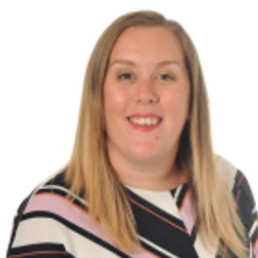
Written by Ruth Argyle
Ruth has been a teacher for 16 years and in her most recent role in ITT at KNSTE she is responsible for leading their Diversity, Equity and Inclusion focus.
Keele and North Staffordshire Education (KNSTE) began a journey of reflection, education and improvement in relation to DEI around 12 months ago. Back in the day we were all a little unsure of online working and when cameras were glitchy, backgrounds were chaotic and we all left ourselves on mute regularly. I then had the absolute pleasure of seeing Hannah Wilson of Diverse Educators speak at a NASBTT online conference. I was immediately and irreversibly inspired by her words. As an organisation we had taken our eye off the important issues that Hannah spoke about and it was time to refocus.
The timing couldn’t have been better. We rewrite our KPIs around March and this gave our work the impetus it needed to have real impact. We thought long and hard, consulting with many of our stakeholders about how best to concentrate our efforts in this area and we decided on three drivers for change:
- Marketing and Recruitment
- Our Curriculum
- Associate Teacher (AT) Experience.
We have been ambitious with our plan and have decided on working towards sustainable, internal change that will have impact for years to come whilst being mindful of resisting quick fixes that may ‘plug a gap’ but do not have long term impact. We didn’t want to buy in someone to deliver a one-off session for us, we invested in our staff and this involved a lot of CPD and big learning moments together. It may seem simple but even just deciding together on what order the letters in the acronym would go was significant. In the early days of this project we would use all manner of combinations of the letters: EDI, DEI, IDE… and would hear it said differently at different events and training we went to. Also, sometimes the E stood for Equity and sometimes it stood for Equality, sometimes people meant the D to mean Diversity, other times people were actually talking about Disability. We needed a shared language to ensure we had a shared understanding on what we were trying to achieve.
We worked as a team to collectively improve our understanding of the terms and what we could be doing as an initial teacher training and education (ITTE) provider. We have many responsibilities; responsibility to the trainees we train each year, a responsibility to the partnership schools and the employing leaders in those schools, a responsibility to the children in those classrooms and indeed a responsibility to the profession as a whole. It was and continues to be scary at times but to quote Hannah “we needed to get comfortable feeling uncomfortable” and work through it as a team. As public professionals we feel the weighty responsibility of creating a culture of belonging in our profession. We are mindful of the Equalities Act 2010 and the 9 Protected Characteristics and will work tirelessly to ensure that there is a place for everyone in our profession.
In the last 12 months we have made many positive changes. We have set up affinity groups for our alumni, training our Teacher Educators about DEI and our expectations of them when hosting a trainee, being more aware of our marketing and recruitment processes to consider elements such as neurodiversity and inclusivity and these are all having an impact within our organisation. Despite this good work we are advocates of the notion that we are lifelong learners. We know without doubt that there is more learning to be achieved, more work to be done and more improvements to make so that everyone who comes into contact with our organisation feels that sense of belonging which we are striving for. As we enter Year 2 of our 3-year action plan we are hopeful for continued impact and improvements and will continually self-reflect and be outward looking to achieve this.
Myth Busting Our Curriculum
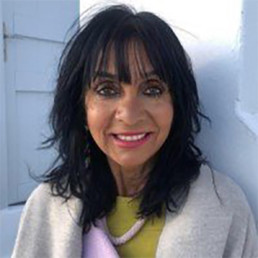
Written by Meena Wood
Meena Kumari Wood is a former HMI (Ofsted), LA Adviser, FE College Principal and Principal of a Secondary Academy, is now a consultant, trainer and leadership coach across the British and International Education sectors.
The island of Zanzibar where I was born was famous – or infamous – on two accounts: clove plantations and slavery. From the 17th century until 1909, spice plantations were worked by Black Africans sold into slavery by Black African tribes to Arab Traders. Zanzibar, East Africa’s slave hub held slaves on Prison Island before transportation to other destinations (Frölich, 2019). The history of Black slavery is far more nuanced than one simply perpetuated by just Whites on Black Africans. Seventeen million East Africans were sold into slavery by Arab traders – a far higher number than those sold into transatlantic slavery. Yet it is usually more common within the History curriculum for students to become familiar with Britain’s involvement in the abolition of slavery in the 19th century, than with the financial benefit Britain gained from the slave trade in the two centuries beforehand.
The alienation of some Black Caribbean and Black African students may in part be attributed to a curriculum, where the contributions and histories of Black people in Britain are not incorporated or openly acknowledged in schools. A Values-Led History curriculum must present a balanced view of colonisation, the British empire and its impact on peoples from Africa, Asia and, nearer home, Ireland. The Windrush scandal report concluded that, in part, it happened precisely because of society’s poor understanding of Britain’s colonial history (Williams, 2018).
The challenge we face as educators is to have a radical rethink of our curriculum. Teaching history through source evidence is not a binary choice of good versus evil. Who chooses the ‘source evidence’ will decide the values and the narrative we want all our students to learn. Winston Churchill, while applauded for his second world war victory, also contributed to atrocities in the empire. During the great Bengal famine (1943), millions died as rice was exported to elsewhere in the empire (Tharoor, 2018). Churchill, however, blamed the famine on Indians ‘breeding like rabbits’ (Safi, 2019).
Generations of young people have been taught that Britain was an intrinsic force for ‘good’ against Nazi tyranny and, therefore, ‘saved the world’ from the forces of evil in the first and second world wars. They may now believe that the British empire was a force for only good. Many children still believe that WW2 was ‘won’ by the British’, and not through a massive world-wide coalition.
Following the Brexit vote in 2016, I met with a class of predominantly White British students; 13-year-olds jubilant about ‘leaving Europe’ and goading another student to ‘go back home to Poland’-reducing him to tears. Their reasoning was that their grandparents had died freeing Britain from the Europeans and now they wanted their freedom from Europe! A mishmash of ignorance and distorted history viewed through their families’ lens influenced these young students and, sadly, resulted in the racist taunts they meted out on fellow East European students.
How do these same children now view the Russia Ukraine war as this may not even be discussed in schools? Don’t our children have the right to be taught that the multifaceted prism of history is a prime influencer on our present lives?
Our students must learn in history and geography of the importance of the unity of the European nations in fighting tyranny and fascism, alongside the role of the ANZAC, African and Asian troops, and what finally led to establishing the European Union. Its continuing relevance to Britain today, now outside of Europe, is key as we face yet another war in Europe.
In our schools we cannot simply continue ‘celebrating diversity’ through famous iconic figures such as Mandela and Gandhi, or scheduling well-intentioned activities during Black History month. Respecting ‘Heritage Matters’ through the curriculum means opening all students’ horizons. Global cultural influences are best threaded through a school curriculum that showcases prominent achievements of a diverse range of individuals in every subject. There is no shortage of inspirational, credible role models.
In science, we can refer to the first Black American African female astronaut Jemison in space (1992). In mathematics, Mohammed ibn-Musa al-Khowarizmi (773 AD) demonstrated the zero in algebraic equations, and by the ninth century, the zero had entered the Arabic numeral system, as we know it today. This example can sit alongside the German mathematician Gottfried Leibniz’s invention of the Step Reckoner ( 1671); a calculus based on the binary system, the genesis of the computer. What about Katherine Johnson, a Black American mathematician, referred to as a ‘computer’? Her calculations of orbital mechanics ( armed with pencil, paper and slide rule), as a NASA employee was critical to the success of the first U.S crewed space flight.
We must empower a nation of young people to be truly proud of their individual and collective heritages. All German schoolchildren learn in history about the holocaust . If knowledge is power then we must enable all our White, Black and Asian children to become more knowledgeable and to learn of the myriad facets of their history. In our classrooms, White British students need to know the contributions made by other nations to the UK economy and society. For instance, if they learn of the British Empire, are students aware of the lasting legacy of the East India Company’s employees in ‘acquiring’ riches, and investing these in Britain’s finest 18 century buildings, even ‘buying’ a seat in Parliament? Thomas Pitt, famously founded the dynasty of two Prime ministers (William Pitt and his son) through the purchase of a diamond, whilst he was Governor in India.
Perpetuating a polarised view of Britain’s role in global history risks creating schisms in our society and risks prejudice, racist attitudes and actions. These are counter to young people developing global citizenship in 2022 and beyond; especially important at a time when the world is shrinking its geo-political boundaries.
To gain deeper understanding and apply the knowledge they learn, young people must acquire critical literacy skills. Only through becoming critical thinkers and readers can they interpret the nuances of history for themselves and come to realise that we are all united more by our similarities than our differences. Atticus Finch, in Harper Lee’s novel To Kill a Mockingbird, sets this as a key life lesson when he tells his daughter,
“You never really understand a person until you consider things from his point of view . . . until you climb into his skin and walk around in it.”
This is how we can hope to create future generations who aspire to change society for the better.
References
Tharoor, S. (2017) Inglorious Empire: What the British Did to India, 1st edn., London: C. Hurst & Co Publishers.
Frölich, S. (2019, August 22). East Africa’s forgotten slave trade. Deutsche Welle [online]. Retrieved from https://www.dw.com/en/east-africas-forgotten-slave-trade/a-50126759 Safi, M. (2019, March 29). Churchill’s policies contributed to 1943 Bengal famine – study. Guardian. Retrieved from https://www.theguardian.com/world/2019/mar/29/winston-churchill-policies contributed-to-1943-bengal-famine-study
Tharoor, S. (2017). Inglorious empire: What the British did to India. London: C. Hurst & Co Publishers.
Williams, W. (2018). Windrush lessons learned, Independent review [HC 93 2020-21]. London: House of Comm
Wood, M. and Haddon, N. ( 2021) Secondary Curriculum Transformed; Enabling All to Achieve; ( Routledge)
On single-sex schools
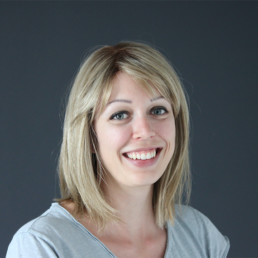
Written by Hollie Panther
DEI Lead, Mental Health First Aider, secondary Science & Psychology teacher and Teach First Ambassador.
Should they still exist in this day and age?
Currently in the UK around 10% of state secondary schools are single-sex (most secondary schools in England were single-sex until the 1970s in England, though in Scotland and Wales there has always been more of a co-ed approach). Broadly, I feel that segregating learners based on any characteristic that doesn’t directly affect their learning should stop (i.e. I’m still for schools that specialise in SEND and disability, and those that specialise in educating learners with behavioural issues — though I wonder if such learners would in fact benefit from incorporation into mainstream schools if done well, as opposed to lumping them in there due to budget restrictions?). Interestingly, nowadays it seems single-sex schools don’t technically prevent other-sexed learners from joining, just as religious schools don’t technically prevent learners joining who follow religions other than that the school centers on, and indeed, learners who come out as trans aren’t made to change schools, due to protection under the 2010 Equality Act.
When engaging with some of the research literature on this topic, it was difficult to find a clear answer as to whether single-sex schooling improves academic outcomes. With a critical hat on, it seemed much of the evidence may have been subject to confirmation bias — that is, that researchers set out to find support for their preferred method of education. There is some evidence for the idea that gender stereotypical subject uptake (i.e. English for girls and STEM for boys) occurs less in single-sex schools, but after I stumbled across a study published in possibly the most highly regarded journal within science, ‘Science’, I decided I’d look no further:
The authors argued that the movement towards single-sex education “is deeply misguided, and often justified by weak, cherry-picked, or misconstrued scientific claims rather than by valid scientific evidence”. The study goes on to conclude that “there is no well-designed research showing that single-sex education improves students’ academic performance, but there is evidence that sex segregation increases gender stereotyping and legitimizes institutional sexism.” (Halpern et al., 2011)
One more, slightly perpendicular, point on research in this area: I’d bet most of the research cited in arguments for single-sex schooling doesn’t consider trans and non-binary pupils. Interestingly, there is evidence suggesting that girls’ schools tend to be better set up to support gender-diverse pupils than boys’ or co-ed schools, due to their more critical and less binary approach to gender (Renz, 2020). It will be interesting to see what effects research finds on trans and non-binary pupils in different types of schools going forward, now that such learners are being considered more in this research area. Even though such pupils are a minority, their experiences are valid and deserve to be described when taking into account whether to legislate on single-sex schooling.
Having taught science in a ‘boys’’ school, I can’t say I noticed any advantages to it being single-sex. Female sixth formers talked of a culture of sexual harassment from younger male pupils which they believed came from girls not being usualised in the school. After trans and non-binary pupils started coming out in the school community, questions were raised as to whether to drop the ‘Boys’ from the school’s name altogether — I would be in favour of this, and more.
Ultimately, I’m against single-sex schooling as I can’t see any real benefits and don’t really see that it has a place within modern society. Single-sex education came about because society believed that men and women should learn different things, due to their differing abilities and also roles within society. Racial segregation in education came about for similar reasons, and no-one would suggest that was a sensible thing to continue, even if one race would do better out of single-race schools.
Let’s move forwards and scrap single-sex schools.
The link between Kintsugi and being a neurodiverse teacher
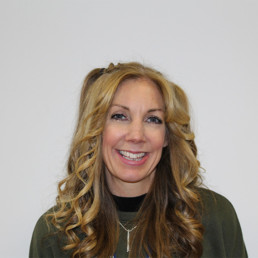
Written by Kelly Richens
Programme Director, BASCITT. BASCITT is proud to celebrate diversity and promote equality and inclusivity (see here)
Foreword by Programme Director, Dr Kelly Richens
Inspired by Hannah Wilson of Diverse Educators, we at the Basingstoke Alliance SCITT are on a real journey to have authenticity around the diversity of our trainees. Are we making progress? For sure, having open discussions, celebrating our differences, making sure all our trainees feel valued for who they are and not being defined by their protected characteristics. Are we there yet? Absolutely not. Whilst in our safe bubble the trainees are openly talking and writing about their lived experiences, yet there still remains a lot of fear. Our openly gay and bisexual trainees do not feel enabled to discuss this within their school communities. And another one of my trainees, recently diagnosed with autism on top of her ADHD, has written a heartfelt article about her struggle of living and fitting into our neurotypical world. She feels unable to add her name for fear of prospective employers discriminating against her, and this saddens me hugely. Please read her article below, maybe share it with your neurodiverse trainees, or maybe all your trainees, so they can maybe have an insight into the mind of someone who sees the world through a ‘rainbow of vibrant tones and hues’.
“I’m sorry. I didn’t mean to…” seems to be the phrase most used by myself since starting teacher training. If it isn’t a meeting I’ve missed, a document I have forgotten to photocopy or a person I’ve accidentally offended, you could say training to be a teacher would be a lot easier. That’s the thing with neurodiversity, as it is now called (for years I think I was simply referred to as odd); you have to take the bad with the good really. You will inevitably, and unfortunately forget, offend and not quite understand elements of everyday life that other people find easier to navigate. Some say it’s a “superpower”. Agreeing outright with this is difficult for me. My opinion is slightly more nuanced; do I think I’m different? Amazing? Eccentric? Fun? Exciting? Yes. Do I view the world through, not rose-tinted glasses, but through a rainbow of vibrant tones and hues? Yes, most definitely. I see through a filter that is completely unique to me, and so does everyone else, but the neurodiverse in me, adds that little sprinkle of “je ne sais quoi” that makes me stand out that little bit more than I sometimes would like.
That said, for all the little particles that make me “me”, there are a plethora of heartbreakingly awful things that accompany that diagnosis. As a child, I was so incredibly that “ADHD kid” in the class, that I didn’t learn to read or write for years. Everything was a struggle. I don’t envy my parents, who were incredibly patient. Those extra-curricular English classes for special needs? I went to those. Did I go to the Art club? Who has time for that when you can barely sit still in any seat for that matter. Can you imagine that I didn’t sleep through the night until I was five!? I didn’t get an official diagnosis until I was twenty-one, and when I started my training, I decided that I needed that extra bit of help (for my needs), as the struggles I had kept as hidden as I could for years, started to crack. At the end of the consultation with the psychiatrist, I felt as though I had been dealt a sentence; “Yes, your ADHD is quite clear… I would also recommend you look into a diagnosis for ASD too…” I know I shouldn’t have cried after I ended that call, but I did. I liked being the girl with the letters after her name; BA, BA hons, PGdip, PGCE, MA… but now I felt I could add another reel of letters right after them. I could feel the hot tears roll down my cheeks, and I felt so alone in that moment. Why was I crying? I had known about the ADHD; I had even made my peace with that bubbly and quirky kid, but now I felt that this new possibility was another part of me, I hadn’t met. A part of me I hadn’t quite reconciled with. What would be these new hardships? Would people treat me differently? What would the future hold?
That fear of the unknown plagued me for weeks, until I realised that it didn’t change anything. If I was Autistic as well, I had always been so. To look to the past isn’t useful if one cannot learn from it. As a trainee teacher, I walk into that Art classroom, and I try to perfect the burgeoning skills that I have been taught every day. That doesn’t make each day a new and surprising one. You wouldn’t know until you have experienced it, that every lesson is in fact, the unknown. You are constantly treading water; but you are living. Sure, you can “know” your students. You could probably pick out the slightly “spicier” ones (as I like to call them), but you will never know what will happen during that one hour. Plan away. Do what I do. Create a scripted and timed lesson. Imagine the questions you will ask and the students you will direct them to… you would be surprised what can make a classroom become a war zone. It could rain? They could have accidentally eaten a chocolate raisin (and who likes chocolate raisins, am I right?) and that could set them off and create the carnage we all fear. Anything can tip a lesson over the edge, but maybe it’s the uncertainty that we all like? Maybe it’s making a difference, or maybe it’s doing something different every day. Whatever it is, we have each taken that leap.
As someone who is neuro-divergent, and I come back to my initial point (see how we get distracted?); those difficulties and anxieties that others have, we feel them that much worse. I am not trying to negate that neurotypical people don’t feel the same as we do, but the intensity and the frequency of those fears are on a whole other level. Being different isn’t always a superpower when you are upset or are struggling, but when you finally get through the strife and hardships, and you have finally made it through that learning curve (and you will. I assure you. It will take longer than other people, and you may offend, be late and all the other stuff you will inevitably do, but you will make it), and it will be worth it. That part of you that doesn’t quite match up with everyone else’s idea of normality, is in fact what makes you the role model to that child who, without knowing it, was looking for someone like you to show them the way. You will be that person that they will look to when they need advice. You be that bright rainbow guiding light in their lives. You will add that extra fizzy colour to an otherwise, maybe drab day or week. You will be, trust me, far more patient with that SEND student when other teachers may not quite understand or care. You will have that insider knowledge that leads to making breakthroughs that others, may not make. You see them, because you have been there.
It takes a long time to perfect your superpower. You must go through an obstacle course of pain, tears and misunderstandings before you feel as though being different is a superpower, but it is worth it. A lot of people say hers don’t always wear capes. They don’t. Some wear glasses, or have a pocket full of post-it notes with lists of things to do (I do!) My phone is constantly ringing because I have reminders to do absolutely everything; from doing the washing, to creating a PowerPoint. I’ve slowly learnt to adapt, like Darwin’s theory of evolution (and the finches on the Galapagos islands… but that’s probably a story for another time!) and navigating my world. You will to. It just takes time.
It is capital to address these struggles; ours are sometimes far worse and more unbearable, and people who don’t suffer from them can’t always understand it. But being uniquely different makes us part of this wonderfully weird and diverse army. I like being part of this club now. I appreciate what I have gone through, and I try to not make as many excuses for myself anymore. I’ve learnt to apologise, but I have also learnt from those hurdles as well. I’m now, in fact, unapologetically me.
As an art teacher, I always think of myself like the Japanese art form of Kintsugi; the term means “golden joinery”, and is the art of repairing broken pottery by mending it with lacquer mixed with gold or silver powder. You can see the cracks, but once they are repaired, they are celebrated. Each chip is a lesson learnt. There is a beauty in imperfection… and who is perfect anyway?
I want to be a reflective teacher, as well as a reflective, diverse and eccentric individual. I’ve made my peace with being different, and so should you. I haven’t quite mastered the perpetual anxiety yet, but it’s a journey. We always ask our pupils to try their best and I am doing the same. Being neurodivergent is a journey, just like life. Be kind to yourself. Breathe, and don’t forget to communicate your needs. You never know who might be listening.
Don’t Look Back in ELT or LGBTQ* Lament
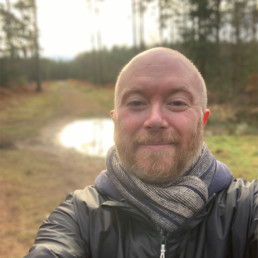
Written by Peter Fullagar
Self-employed ELT & DEI editor, writer and consultant. Creating Principled, Just & Fresh content.
I imagine for some of you reading this, you may have no idea what ELT is. Or EFL, ESP, EAL, EAP, ESL, ESOL … the acronyms are endless. I prefer to use ELT (English Language Teaching) to describe what I’ve been teaching and creating materials for over the last twenty years. For the other acronyms, I’ll put a small glossary at the end.
Yes, ELT has enabled many of us in the profession to travel the world and see different countries and cultures – usually on a minuscule pay packet, too. However, I’d like to see ELT on a par with ‘regular’ teaching and materials so that we can benefit from all our experiences and expertise together.
Like mainstream education, the ELT industry is working hard to become more inclusive and representative in its materials, not to mention its teams within publishing and teaching. Although I’m mainly focusing on materials here, I feel it’s worth mentioning that native speakerism is, unfortunately, still prevalent in the industry. Advertisements which specify for native English speakers are discriminating against the teachers who have gone through the process of learning and mastering another language. Invaluable experience, if you ask me. For an interesting (and successful) story, see Rachel Tsateri’s blog post on native speakerism and her personal experience.
Take an ELT coursebook published in the last twenty years and look through it, if you can. See how we represented people to learners of English. White, heteronormative, ‘Western’ (UK & US), non-disabled, middle class, neurotypical, stereotypically gendered and aged, slim … I could go on. One particular activities book, published in 2001, looks at ‘controversial’ issues, with ‘Gays and jobs’ being one unit. I discuss this in a blog post – Queerience: I am neither a taboo nor an issue. OK, so it’s twenty years old, but did we really think that was acceptable even then?
As a gay (queer) cis man, I’m determined to make a difference to help represent the LGBTQ* community in ELT materials. Out of the protected characteristics, it will probably be the last one to be addressed in ELT. Some of the biggest ELT markets are also those that criminalise LGBTQ*. According to the Human Dignity Trust, 71 jurisdictions criminalise private, consensual, same-sex sexual activity. Almost half of these are in the Commonwealth. Therefore, one of the biggest issues for me is how can we represent marginalised communities in countries where the very essence of the identity is forbidden? How do we reach those people in those countries who identify as part of the forbidden community? If people don’t see themselves represented, then they may believe that their very being is wrong. That’s what growing up in Section 28 did for me.
Things are changing for the LGBTQ* community in ELT. The commitment by publishers to incorporate DEI initiatives in their daily working life is encouraging. I worked on in-house guidelines for a major ELT publisher. Freelancers like me are producing their own inclusive materials. But there is still a long way to go. Do publishers go fully inclusive with an LGBTQ* family and risk losing a large portion of their income? Or does a publisher go fully inclusive with an LGBTQ* family and lead the way in representing the reality of the world? I know which one I’d prefer.
I said I’d help with a little glossary:
EFL – English as a foreign language (TEFL = teaching …)
ESP – English for specific purposes
EAL – English as an additional language
EAP – English for academic purposes
ESL – English as a second language
ESOL – English for speakers of other languages
Special Interests
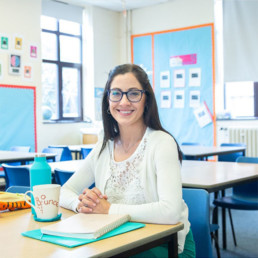
Written by Nadia Hewstone
Nadia is a certified executive school leadership coach. She left headship to start Destino Coaching and now supports school leaders with their own development as well as development of their teams.
Hunter is not Hunter’s real name – he chose it for this blog. It is taken from the Japanese anime series, Hunter X Hunter. The show features the protagonist Gon, on a mission to train himself as a hunter. He reunites with his father, who is alive and an accomplished hunter too. This is one of Hunter’s special interests. He doesn’t just like it, he lives it.
Hunter has been hooked on the Rubik’s cube for years. He spends hours working on improving his solves. His favourite events at cubing competitions are 3×3 blind and 4×4 blind. He talks about algorithms and memorization all the time. It makes no difference to him if you take part in the conversation (which I can’t because I don’t understand it). When he meets someone new he judges their usefulness to him based on how well they can solve a cube. I’m not that useful to him.
He has had many interests over the years. He wore a spiderman costume for over a year once. He taught himself how to play a Japanese flute, learnt how to graffiti and covered our garage. A particular favourite of mine was his interest in detectives. We sourced him a set of detective items from obscure dealers online and he made traps and spied on us for months. He studied Sherlock Holmes and took on many of his traits for a while. When we booked a villa in Mallorca one summer, he spent 10 days inside watching the series starring Benedict Cumberbatch over and over. By the time we flew home he had decided to take up the violin.
These interests envelop him and drive him – they have a mad urgency that is quite exciting but also tiring at times.
He understands now that being in a community of enthusiasts helps him. So we travel all around the country attending Rubik’s cube competitions. These events consist of 2 days of sitting in a hall of 200 hundred (mostly) boys clicking their cubes and discussing the merits of different brands of lubrication. It’s given him so much more joy than we could ever simulate at home. It’s also enabled him to talk about being autistic. In the evenings, in the bar of the hotel, he socialises and it brings me great joy.
Penny is my daughter – the name is taken from Big Bang Theory, her favourite TV show. She watches it on a loop. It’s a comedy but she never laughs at it. She has glasses the same as Penny’s and uses phrases from the series all the time. She wants to be a brain surgeon and study sciences like many of the characters in the series.
Penny’s interests aren’t as clear as Hunter’s. Apparently this is common in girls with autism. She does have things she likes, really likes but doesn’t have hobbies in the same way Hunter does. She worries about her friendships (which are hard work for her). She does like series / TV shows so we have moved through lots of them and on days when she is very low she watches all 8 Harry Potter movies without sleeping. She is very capable and could achieve almost anything. When she takes up a hobby she excels very quickly (football. piano, singing, drama, swimming) but loses interest just a fast. This means her interests don’t show in the same way as Hunter’s do. She does like to talk and talk and talk about the social politics of school, the family, my work etc.
Penny sometimes talks at me all evening and doesn’t let me move. Her favourite criticism of me is ‘I don’t feel like you’re completely present Mum’. What is impressive about her is that when she sets her mind to something she achieves excellent results. If she ever does a manicure for me, for example, it far exceeds the quality of a salon experience. She’s meticulous, a perfectionist, in fact. This is probably why she gives up on things – she sets such high standards for herself that it tires her out.

